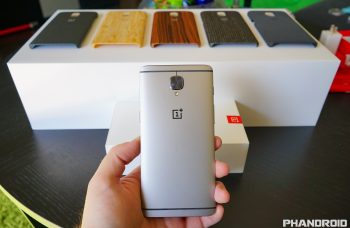
OnePlus co-founder is sick and tired of unwarranted criticism, and so am I [OPINION]
Well, it seems someone has reached their boiling point. OnePlus owner Carl Pei reads, and he reads a lot. He was browsing Reddit this week when he came across a thread regarding AnandTech’s review of the OnePlus 3.
In it, someone mentioned that OnePlus went with a 1080p AMOLED display because they were able to get old panels on discount, something that suggests they cut a corner. Well, he didn’t like that. Here’s just the beginning of a pretty spirited rant on this matter:
I’m sick and tired of sentiment like this. It may not seem so, but for a product company — it’s insulting.
It started with the OnePlus One, people trying to find explanations and faults that could have led to its reasonable price. People were complaining about screen variance (visible and common for LCDs, search for “iPhone yellow blue screen” images), vibration motor, and cheaper NAND, etc. Looking for any explanation, and quick to jump on bandwagons and to conclusions.
Deeper into the rant, Pei says OnePlus makes devices with nothing but the user experience in mind. Here’s a general idea of what that typically encompasses:
- Battery life
- Performance
- Design
- Camera quality
- Software features
There’s a bit more to it, of course, but that should give you a pretty good picture of what to expect. Anyway, the decision for OnePlus to go with a 1080p panel in the OnePlus 3 suggests — to some people — they cut corners. That suggestion comes from ignorant-minded rhetoric that yesteryear’s hot resolution means it’s yesteryear’s tech.
But as Pei reminds us, that’s not the case at all. Display panels with new tech are still being produced in 1080p resolution. Did it never occur to anyone that the decision to go with a 1080p display had something to do with battery efficiency and chipset performance? After all, a phone has to work far less to power a 1080p experience than a 2K one.
What does “best specs” actually mean to OnePlus?
It’s the argument I’ve made here on Phandroid time and time again. The specs race is dumb. Pushing the bar for the sake of pushing the bar makes little sense. Why go with a 2K display when a 1080p display can be just as crisp and offer great benefits?
Of course, back then I was speaking before we knew how popular VR would be and how important high resolution is to creating those levels of immersion. But the point still stands — there’s legitimate reason to pull back in certain areas when it comes to designing a smartphone, and OnePlus probably felt that using a lower resolution display was one of the best ways to hit their most important user experience targets.
Here’s another example: 6GB of RAM in the OnePlus 3 isn’t being used to its full potential because the company would rather ensure battery life is top notch. And if Chris’s findings are to be taken at face value we’d say that tradeoff is pretty damn good.
All of that is not to mention how cheap the OnePlus 3 is for the hardware you’re getting. Other companies typically ask you to pay $600 or more for a package of this caliber, but OnePlus wants just $400. We’re not saying it’d be OK to “cut corners” in a way that undermines overall device quality, but can we really expect everything to be 100% cutting edge at such thin profit margins? It becomes even more startling to entertain that train of thought if you believe Carl Pei’s claim that a 1080p Super AMOLED display is not so much more expensive than a 2K panel that cost would be the deciding factor in choosing one over the other.
Don’t get me wrong, I’m not absolving OnePlus of certain other missteps they’ve taken in the past, but trying to discredit the company’s efforts over the fact that the OnePlus 3 uses a 1080p display is downright silly, and Carl Pei — and anyone else who feels strongly on that — has every right to be upset at the resulting commentary.
Any other qualms, such as the fact that said 1080p display uses the same pentile pixel matrix that drove everyone crazy on the Galaxy Nexus (but are now somehow content with on Samsung’s latest flagships) or the fact that it isn’t calibrated to the standard sRGB color format that much of the web uses these days (something OnePlus says can and will be made available in a software update), are different stories that you’re just as free to speak on as anything else.
I’ll end with this: OnePlus is interested in making value-packed products, and the decisions of what to use and what not to use in those products are hard when your profit margin is significantly lower than those who have the clout (Samsung) to charge a lot more. Because of this, it might not have top tier specs at every level, and it may not be 100% to your liking. That’s fine. We are all different and we all place importance on different things. You can either buy the product or not. You can either accept all the decisions OnePlus made to get the product into your hands, or simply pass. Your wallet, your choice.
[via Reddit]